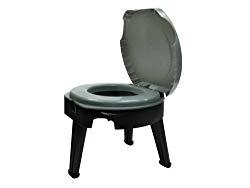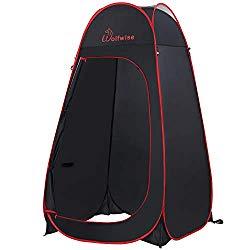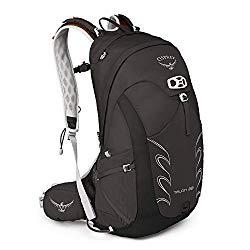In the first post on this series on camping, we talked about the gear you’ll need to get out and enjoy the great outdoors. Today we’ll talk about where you can go, looking at options to fit different budgets and sleeping arrangements, from roughing it on the cheap to the posh life. We’ll also talk about what you’ll need to bring with you for the different options.
(Note, this site contains affiliate links. As an Amazon Associate I earn from qualifying purchases. When you click on an affiliate link and buy something, The Small Investor will get a small commission for the referral. You are charged nothing extra for the purchase. This helps keep The Small Investor going and free. I don’t recommend any products I do not fully support. If you would like to help but don’t see anything you need, feel free to visit Amazon through this link and buy whatever you wish. The Small Investor will get a small commission when you do, again at no cost to you.)
Everyone has a different idea of camping
Different people have different ideas of what is considered camping. Some would say that you need to be out in a tent
Who is right? Why does that matter? The objective is to get out and have some fun. To recharge your batteries and the be ready to take on the world again. Camping is whatever you want it to be. Let’s look at some different camping options.

(If you enjoy The Small Investor and want to support the cause, or you just want to learn how to become financially independent, please consider picking up a copy of my new book, FIREd by Fifty: How to Create the Cash Flow You Need to Retire Early This is the instruction manual on how to become financially independent.)
Standard Campground Tent Camping
What it’s like: Sleeping with a lot of other campers, many in trailers, in an area typically with ranger programs and amenities such as swimming areas, playgrounds, and bathrooms with showers. Cost is normally between $8 and $25 per night, although places near the beach may run as high as $90 per night. If you don’t mind being around people, campgrounds make things easy since you have a lot of the infrastructure you need to be comfortable right there. Plus, there may be other kids for your kids to play with (bring bikes) and you may meet some great people yourself.
We’ll start by looking at the basic – the standard camp out in a tent with the car fairly near by. The easiest place to do this is in a campground. Most campgrounds have a fairly wide area laid out with anywhere from 40 to a couple of hundred campsites distributed around it. Most campgrounds have one or two big loops with campsites on either side of the road. You normally pull your car just off the road onto a designated spot and have your piece of paradise next to your car, containing an area for your tent, a picnic table, a grill, and a fire ring. Some have a lantern hanger and some may have a tent pad.
They will also have bathrooms with showers. Since most of the other people in the campground will have trailers and motor homes, even though there may only be two or three shower stalls in the bathrooms, you’ll actually find that you are the only one using the shower, so rarely do you need to wait. Since you’ll be walking to the shower and have a lot to carry, you’ll want to have a bag for your clothes
One thing you quickly learn about campgrounds is that the people who design them normally don’t understand tent camping at all. Many sites are designed for trailers and motor homes, so there may be little or no level ground and you may end up camping on the asphalt in your parking space next to your car. (In case this is the case, make sure you have a great air mattress and a pump.) Other times there is actually a tent pad, where they require you set your tent, but they’ve decided to cover it in gravel, which makes it really difficult to insert tent pegs and/or ensures that you’ll have lots of knee splitting, back breaking rocks under your tent.

Just in case you’re sleeping on gravel or asphalt, bring a good air mattress. Double-width mattresses, like the OlarHike Queen Air Mattress with Built-in Pump for Guests, Inflatable Double High Elevated Airbed with Comfortable Top, Raised 18″ Real Air Mattresses as Camping Bed, Inflated Size – 80 × 60 × 18 INCH
The best camping spot I’ve seen for tents was in South Carolina. Here they actually had sand on the tent pads that they raked between each new guest! Plus, the campgrounds were far enough apart that you really felt like you had some privacy. The only downside was a set of racoons that would try to steal any food you left out everytime that you turned your back, but that was part of the charm.
The other issue I’ve seen with campgrounds is that spaces tend to be right on top of each other. Some campsites have spaces specifically there for tent campers, which you might think would be ideal since they get you away from the motor homes and camper trailers, but sometimes the tent sites are really small, placing you a foot or two from your neighbor. Again, people who design campgrounds don’t seem to really understand tent camping, thinking that a tent doesn’t take up much space, not realizing that since you don’t have thick walls you need more space for privacy, not less. Still others require you park your car elsewhere and then have a fairly long walk-in to your site. This can make it a challenge to carry all of your gear if you’re not planning on such a hike. If you can, it is a good idea to visit the campground before you go and see what the tent arrangements are for yourself. You might even drive around and find the sites that have extra space or privacy and note them for when you make the reservation.
Finally, while often getting water in a campground is just a matter of going to a spigot at the entrance of your site, sometimes sites designated for tents don’t have water at the site. That is why it is a good idea to have a large water jug

You’ll want a water jug like the Reliance Products Aqua-Tainer 7 Gallon Rigid Water Container
National Forest Camping
For a long time we would just get a topo map
The nice thing about this kind of camping is that you’re generally away from people, with perhaps a few cars passing by each day and someone camped down the road. There was also lots of firewood around since there were not a lot of people camping there, having big fires as is the case in a campground. The bad part is that you need to supply everything or else do without. You would need to bring chairs, a table for cooking, a grate for the fire, water for drinking and cooking (about 3 gallons per per day per person, unless you brought a way to treat stream water). This was in addition to all of the stuff you needed to bring for a standard stay in a campground. There was also no power, so you’d need to bring a battery operated pump or a hand pump to fill things like an air mattress.
Still, this kind of camping really allows you to get away from everyone, which is a big reason a lot of people go camping. You wouldn’t have people a few yards away, perhaps talking loud or playing music late into the night. You wouldn’t be awoke early in the morning by people or cars passing by. You wouldn’t feel like you were always out on display since there were few if any people around. You were also more likely to see wildlife since you were further out in the wild.
Other than national forest land, there are some state parks and other wild lands that allow you to camp in open spots. Still others have primitive campsites distributed throughout the area. These are often first come-first served, you it is a good idea to get out there on a Thursday night or at least Friday morning rather than planning to pull in Friday evening since someone may have already taken the site you wanted.
Obviously one issue with this sort of camping is finding where to relieve yourself when nature calls. This is less of an issue for guys than girls (although I did discover that they make devices allowing ladies to relieve themselves standing up

Thanks to the GoGirl female urination device, women can relieve themselves in the woods as easily as a guy.
As long as you are far enough away from people to find a private spot, and as long as you make sure you’re sufficiently away from water, you can dig what is called a “cat hole” and cover everything up. Still, this isn’t much fun. Another solution is to get a portable camping toilet. These range in sophistication to a bucket with a toilet seat that fits on top to a little toilet chair. These are used with bags that contain chemicals to hide the scent, turn urine into gel, and make disposal easy. You could also dig a small latrine and place one of these portable toilets over it (again, away from water). In this case, make the hole about two feet deep to allow for decay and cover everything up well when you leave. You’ll actually find that smell is not an issue if you throw in a couple of spades full of dirt periodically.
In addition to a toilet, you’ll want a portable shelter for privacy. You may also want to use one of these with a camping shower if you’re out for more than a day or two. There are some great shelters/changing tents that work well for this purpose.

We use a Reliance Products Fold-to-Go Collapsible Portable Toilet

WolfWise 6.6FT Portable Pop Up Privacy Tent Spacious Changing Room for Camping Biking Toilet Shower Beach

DOTSOG Portable Outdoor Solar Shower Bag Camp Shower Bag 5 Gallons/20L with Removable Hose and On-Off Switchable Shower Head for Camping
Backpacking
If you want to get away from people and see some things that only a few get to see, there is nothing like a backpack trip. This requires that you carry everything that you use in on your back and that you walk for at least a few miles, but the solitude you get is well worth the trouble.
One of the nice things about backpacking
Even though you’re heading into the back country, you’ll usually need to stay in established campgrounds. There are some locations, particularly in remote and lesser-used areas where you can open camp, but most places have designated sites. Some of these sites require a reservation, where others are simple first-come first served. Luckily, because there are fewer people willing to make the trek into the interior, you are usually able to find a spot. In fact, you’ll often be one of two or three parties in the campground during any given night.
Now let me say, backpacking isn’t a hobby where you should just buy a pack and head out. If you forget something at the campground, you can generally find a local store or, at worst case, pack up and head home. With backpacking you’ll often be out far enough that you’ll be there for the night, so if you forget something critical like a way to treat your water or a critical part of your tent, you could be in for a rough night. There is also the danger of getting lost or ending up on a trail that is beyond your abilities. For these reasons, it’s a good idea to go with an experienced backpacker a few times until you’re sure that you have everything you need and learn some of the secrets.
Obviously you’ll need a backpack. You’ll also need somewhere to sleep, with a small tent or hammock both being good options. Note that if you’re going with others you can split up a tent to spread out the weight with one person taking the body, another taking the poles, and maybe even a third taking the stakes. You’ll need a sleeping bag that can be compressed into a small space, a backpacking stove (unless you’re going to cook over a fire only), a ground pad, and some cooking and eating utensils.

Osprey makes some great backpacks, such as their Osprey Packs Talon 22 Men’s Hiking Backpack
You’ll need food that can go with out refrigeration, a couple of water bottles, and a way to purify water. Then you’ll also need things like matches, a pocket knife, toiletries, a flashlight or head lamp
With backpacking sites it is all about water. Most established sites have a source of water near by. Be sure to verify this before you head out, at least my looking at a map and maybe by checking with a ranger since sometimes water sources dry up. At times you may need to carry water for a mile or more from a stream or other source to your campsite. A used gallon plastic jug that can clip onto your pack works well for this.
With a backpacking trip you can choose to just go for a night or you can stay at a spot for a few days or maybe even stay at a few different sites. Often trail systems have a few different sites within a day’s walk of each other, allowing you to design an expedition. You’ll definitely want to spend some time learning about an area before you get too far back into the backcountry, however. And don’t expect to rely on your phone to get yourself out since you may not be able to get a signal, you may run out of battery and be unable to charge, and rescuers may have a difficult time finding you. Not to mention that rangers have better things to do than going out to get hikers who’ve gone out beyond their ability level.
Trailer
It kind of gets questionable whether you’re actually camping if you’re in a trailer. But I guess you get into the outdoors, you might have a campfire, you might cook a meal or two outside, and you’re a little less comfortable than you would be at home (hopefully), so you might call it camping.
I won’t spend much time talking about trailer camping since I haven’t done it. Most people I see camping in trailers spend a lot of time indoors at night and for some reason they put up a lot of Christmas lights and other displays as if they are trying to burn as much electricity as possible. Of course, it looks really comfortable since they need to make rules at campgrounds that you need to leave every month or so which, I assume, is for the people in trailers since I’ve never seen anyone spend more than three or four days in a tent.
Many trailers have bathrooms and even showers, so you’ll probably not use the bathhouse as much. This is a good things since most bathhouses only have a couple of showers and it would be impossible to get a shower if everyone in the campground used them. I’ve seen some neat things with trailer campers, including a guy who had a TV setup outside to watch the game. It definitely looked relaxing.
Have a burning investing question you’d like answered? Please send to [email protected] or leave in a comment.
Follow on Twitter to get news about new articles. @SmallIvy_SI
Disclaimer: This blog is not meant to give financial planning or tax advice. It gives general information on investment strategy, picking stocks, and generally managing money to build wealth. It is not a solicitation to buy or sell stocks or any security. Financial planning advice should be sought from a certified financial planner, which the author is not. Tax advice should be sought from a CPA. All investments involve risk and the reader as urged to consider risks carefully and seek the advice of experts if needed before investing.
